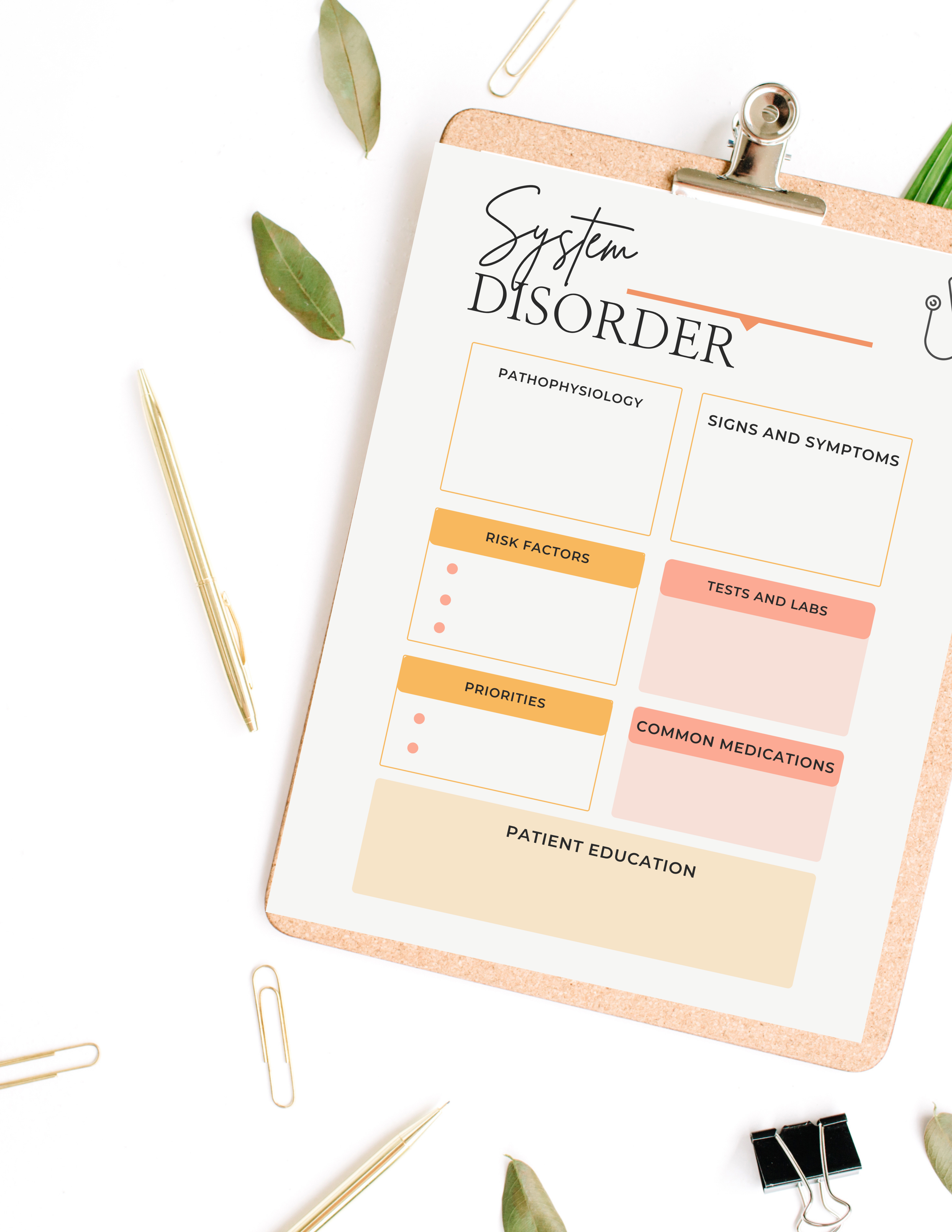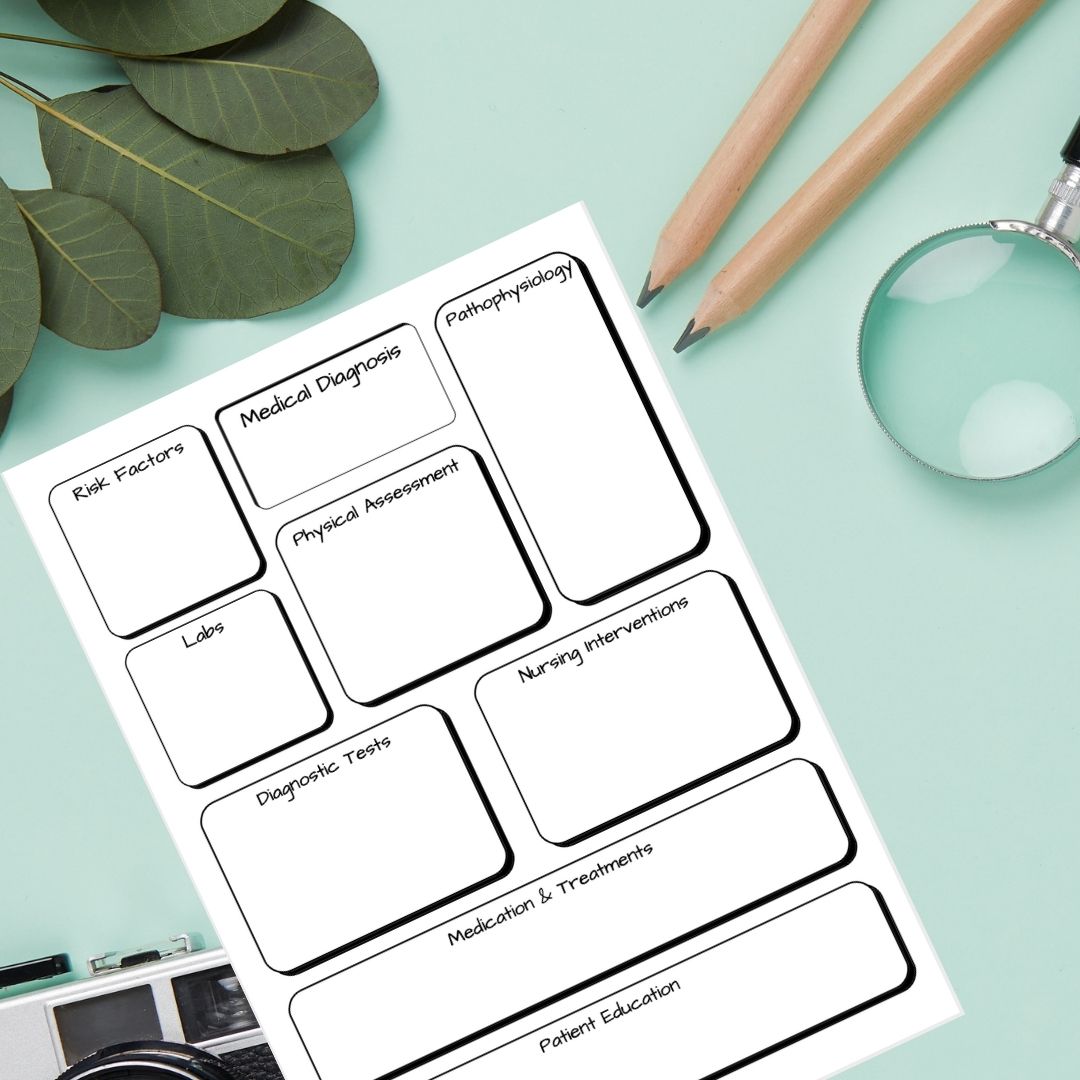Time management is hard in normal times. During a pandemic, it’s almost impossible to stay on task and focus on school. There are so many directions we are pulled in. Who can blame you for being distracted? During this pandemic, we still have seven days in a week and 24 hours a day but most of the time it doesn’t feel like it.
Concept maps bring together everything you learn in the lecture and your textbooks like diseases, signs and symptoms, nursing assessment, and nursing interventions together as well as compare and contrast them to other diseases.
I learned how to use a concept map during my first semester in nursing school. After I learned how to make and use a concept map, I saved hours studying and did better on my exams.
Here are 8 things to include in your concept map:
1. Clearly describe what you are studying.
2. Who is at risk for this disease, illness, or complication?
3. What do I need to assess and look for with this disorder (think of lab values, signs, and symptoms)?
4. Identify physiologic process, consequences, and dysfunction.
5. What is the patient also at risk for? How can we use our nursing interventions to prevent a complication?
6. What should be prepared for as a nurse? Think CBC, BMP, X-Ray, CT, and common medications.
7. What should my priority be?
8. What does my patient need to know?
Concept maps can be used to develop those Critical Thinking Skills you will hear over and over again in nursing school and out in real life nursing. Use a concept map to apply the information, and not just memorize it.
Check out my previous blog posts for more inspiration
Top 4 Things to Never Do Before an Exam
The Tip That Helped Me Pass My Nursing School Exams


